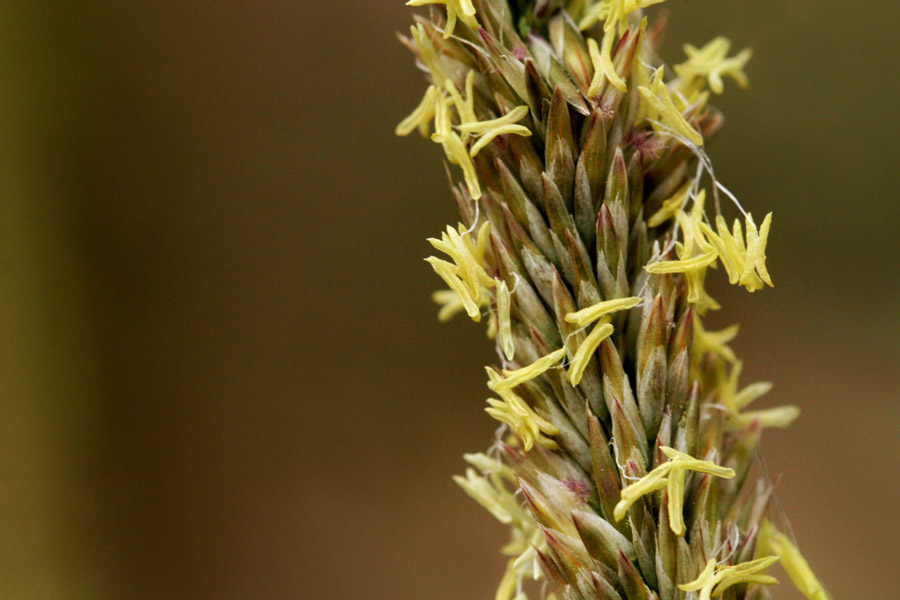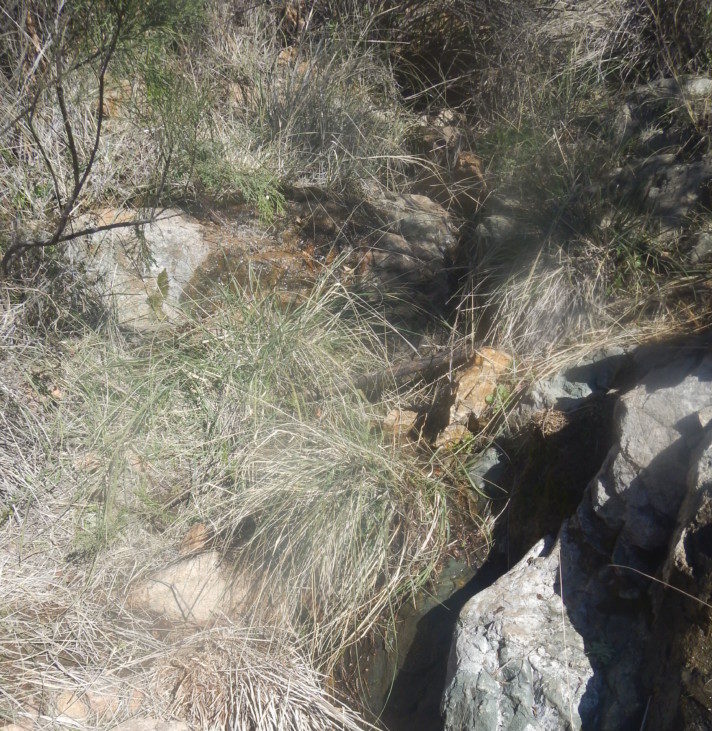One of the first plants we teach our volunteers to look for when out Spring Seeking is deer grass (Muhlenbergia rigens), a type of bunchgrass commonly found near water sources in the Sky Island region. This week, we’re here to pass this knowledge to you, too—so that you can identify deergrass next time you’re out enjoying nature.
Description:
Deer grass, also called deergrass, deer muhly, or zacate de venado in Spanish, is a perennial bunchgrass—much like many of the region’s native grasses (e.g., sacaton or some bouteloua gramas). Bunchgrasses grow densely in localized clusters, rather that spreading out in individual strands like lawn grass. Deer grass can be found near water sources like streams and springs.
Deer grass can grow up to five feet tall and four feet wide, but is usually about three feet tall and a couple feet wide. When not overtaken by invasive grasses, deergrass plays an important role in preventing weeds and nonnative plant species from growing due to its strong and expansive root system (source: USDA). It also provides stability for soils near riverbanks and streams, thereby helping prevent erosion.
Deer grass looks clumpy but is made up of many smaller bunches and stems, called culms, that are roughly ½ inch wide. Each plant has long flat leaves and multiple inflorescences, or seedheads, that mature throughout the season to eventually produce light yellow flowers.
These inflorescences have a unique appearance: hundreds of small spikes grow from each one, and they remain slightly green in hue until they mature and produce seeds, at which point they take on a golden-yellow tint.

A close-up of a mature inflorescence – seedhead – with small yellow blooms. Credit: SEINet, Patrick Alexander
Deer grass blooms in warmer months, typically between April and September each year. Many mammals rely on young tufts of deergrass for food, and the seeds are eaten by local bird species. Deer grass also provides nesting materials and shelter for many of the region’s pollinators, including bees.
Habitat:
As a native plant, deer grass can be found in Arizona, California, Nevada, New Mexico, and Texas. It is also found throughout parts of Mexico. Deergrass grows at elevations below 7,000 feet and prefers grasslands, streambeds, and meadows. In fact, it is often the first plant you’ll see when looking for springs, as deergrass is a great indicator of shallow groundwater.
While deer grass grows near water, it does not do well in poor drainage and grows best in areas with abundant sun and sandy or gravelly soil. However, once the root system is in place, deergrass is considered extremely drought resistant (source: USDA).
Status:
Deer grass grows abundantly in the Sky Island region and is not on any list.
Identification Tips:
Here are some things to look for when identifying deer grass:
- Water sources of various types, including seeps and underground springs
- Grass clusters that are four to five feet in height
- Flat leaves with relatively smooth-feeling edges, with a width of about ¼ inch
- Narrow stalks (< 1/8”) with seedheads about ¼ – ½ inch in width
- Small yellow/cream-colored flowers on each inflorescence/seedhead
- Compact seedheads when mature
Sources:
California Native Plant Society
U.S. Department of Agriculture


